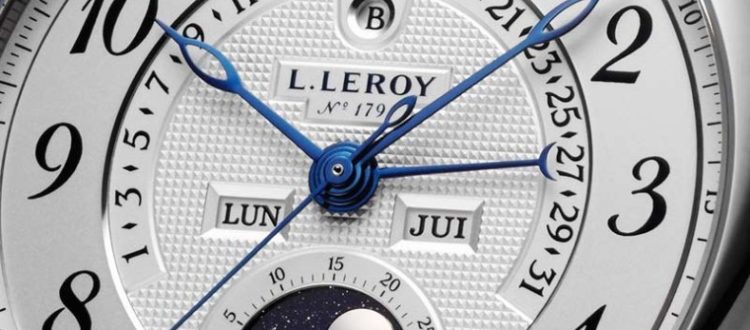Why are We Impressed by Leroy… and Why We Think It is the Best Kept Secret in the Watch World
What makes a modern watch brand unique and collectible? What kind of watch brings not only joy, admiration, inspiration and awe, but also makes it an enduring investment that will steadily appreciate in value?
I am sure all collectors of high-end fine watches have asked these questions…
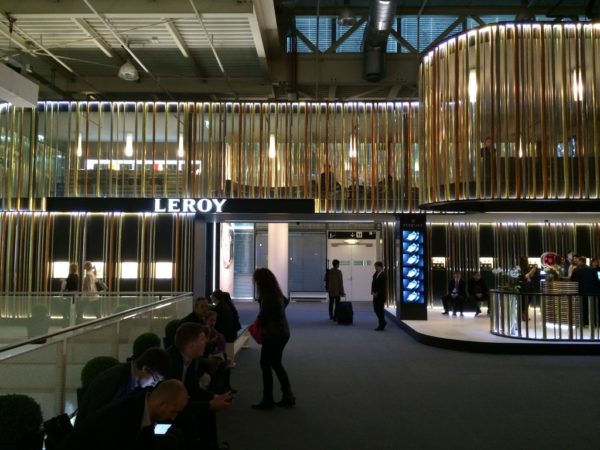
Leroy at Baselworld
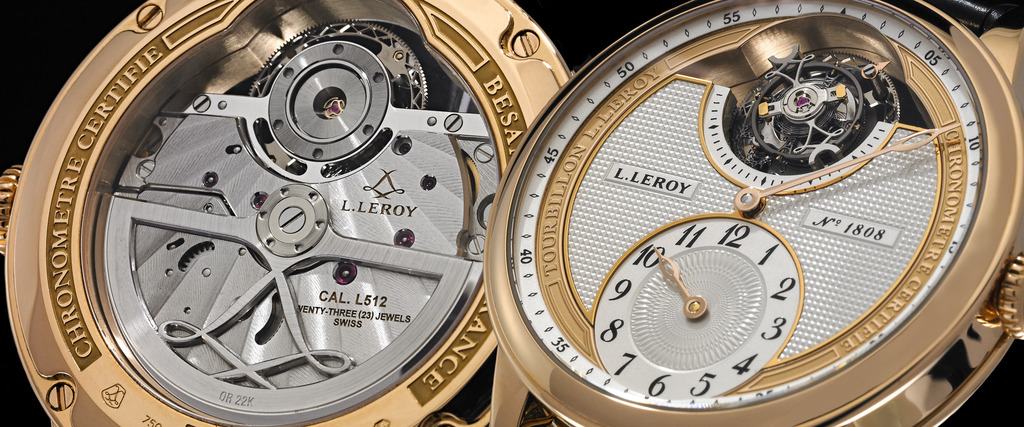
Leroy Osmior Tourbillon Regulator in 18K rose gold – winner of the 2013 International Chronometry Competition in the category of tourbillon
In our decade-plus experience of dealing in high-end brands, we have gradually uncovered certain patterns – in order for a luxury watch to be sustainably collectible and valuable, it needs to satisfy the following criteria.
1. First and foremost, the product itself has to be genuinely and objectively well-made.
“Well-made” could mean ingenious in-house movement design and execution; masterful and labor-intensive finishing on the case and on the movement; beautiful dial work; a fascinating, unusual or technically ambitious complication mechanism; a painstaking focus on precision and chronometry; or better yet, a combination of the above. (Note here I didn’t say “bold and fascinating case design” – just because a watch case is crazy and unusual, does not mean it is well-made).
There is simply no substitute for a well-made product. No amount of big-budget fancy marketing, event sponsorship or celebrity endorsement is going to mask a poorly-made and dishonest product. The smoke-in-mirror tactic might fool the novice public for awhile, but as consumers become more experienced with watch collecting, they will know how to appreciate fine details and how to tell a well-made watch from a poorly-made watch, and will not be fooled further.
2. The brand needs to have a genuinely inspiring story/history that emotionally connects with the customers. The history needs to be reflected in the current products.
Although a well-made product is important, we are not buying mechanical watches as a tool. After all, we are buying luxury goods, and true luxury should speak to our emotion, affection, imagination and inspiration (needs that are higher up on Maslow’s hierarchy of needs).
These are not just empty celebrity endorsements or glitzy product launches that have nothing to do with the core DNA of the brand.
For a modern brand with independent watch, just like good artists, creators can talk about the inspiration behind the design, how their experiences growing up shaped their current design philosophy, the meaning of the pieces, how difficult it is to create and execute the movement, how they overcame the many difficulties, etc. The message needs to be focused and genuine, so that every time the customer wears the watch, he can emotionally resonate with the creator and could envision the watchmaker’s thousands of hours in creative process coming to fruition in the form of this awesome machine on the wrist.
Brands such as FP Journe, MB&F, Urwerk, have done a respectable job in this domain.
For a brand with a rich history, there is a need to communicate its notable achievements in horology, how it impacted watchmaking, and its impact on history whether through its patronage by illustrious owners, or its participation in historically meaningful events or organizations.
Most importantly, the current collection has to reflect this history. If one looks at a brand such as Patek Phillippe, Vacheron Constantin or Breguet, one can clearly trace, thanks to historical archives and museums, its place in human history and its contribution to watchmaking history. Also, the brand’s current collections are evolutions of its historical pieces and the designs stay true to the brand’s historical DNA – the modern Breguet watches are very similar to the Breuget pocket watches in the 1800’s with the same kind of hand guilloche patterns and Breguet-hands on the dial; the newest model of Patek Phillipe chronographs are reminiscent of its chronographs in the 1960’s, etc…
A brand’s rich history needs to provide a disciplined approach to their current designs, and their current communication need to further the brand’s historical mission. Without these two factors, it’s just empty story-telling.
3. Sufficient amount of vertical integration (in-house manufacture)
Completely in-house design and manufacture of movement not only make the watch intellectually stimulating, but provides the customer with the most complete DNA for the brand (i.e. it is similar a winery that has grape-growing, wine-making, and bottling all on its estate). This also guarantees long term technical independence from suppliers. If a brand relies heavily on suppliers for the movement, what would it do when the supplier decides to stop supplying or raise its prices (e.g. as in the case of ETA movements from the Swatch Group)?
A brand with such heavy investment in equipment, personnel, real-estate and technical know-how showcases to the world that it is serious, and it is here for the long run.
4. A relatively small production
Rarity is a big component of luxury. A luxury brand needs to keep the production small – for both rarity and fast service turnover. In the era where the once small-production boutique brands are routinely consolidated into big luxury public companies, there is the constant pressure to increase revenue, and hence production (e.g. Roger Dubuis). It’s a difficult trade-off between increased production and distribution (awareness and revenue), and the prestigious rarity and careful craftsmanship that embody each watch (e.g. an extreme case would be Phillipe Dufour and Vianney Halter). Without managing this balance, a high-end brand risks becoming “too common” and could suffer from slow after-sale service.
5. Finally, a focused management with strong financial backing
Often times, we see independent brands that create beautiful pieces suffer because they have shaky financials, and run out of money for consistent marketing and R&D. As consistent marketing is important in building a brand but the payoff might take years to realize, strong financials and a long-term managerial perspective are crucial. These factors ensure the long-term health and appreciation of the brand.
Why am I impressed by Leroy?
In the world with hundreds of high-end watch brands, it is rare that a brand would embody multiple of the above factors. It is even rarer to have brand that score high on all of the five above factors (I can count them with two hands).
Leroy is one of such rare gems.
Here’s why:
1. the brand has an illustrious and innovative history with strong focus on chronometry.
Founded in 1785, Leroy is the one of the oldest haute-horology watchmaker in existence – older than Patek, Breguet and Blancpain. It was the finest producer of high complication
pocket watches all the way through the early twentieth century, and more prestigious than the other top Swiss houses during that era.
Appointed official watchmaker to the Naval Ministry in 1835, Leroy held this prestigious title for longer than any other company in this field. The company produced more than 2,200 chronometers of all types dedicated to precision time keeping at sea.
As a French-Swiss watchmaker, Leroy was more prestigious than the contemporary Breguet. Marie-Antoinette, Proust, Matisse, Napoleon, Queen Victoria, Roosevelt, Chopin, Nobel, Bugatti, aviation pioneers Charles Lindbergh and Santos-Dumont are just some of the illustrious owners of a watch manufactured by Leroy.
A remarkable achievement, the Leroy 01 won the Grand Prix Spécial du Jury at the Paris Universal Exhibition in 1900 and, with its 25 horological complications, remained the most complicated watch for nearly a century, until 1989.
It was a winner of a record 384 gold medals in chronometry competitions during its history.
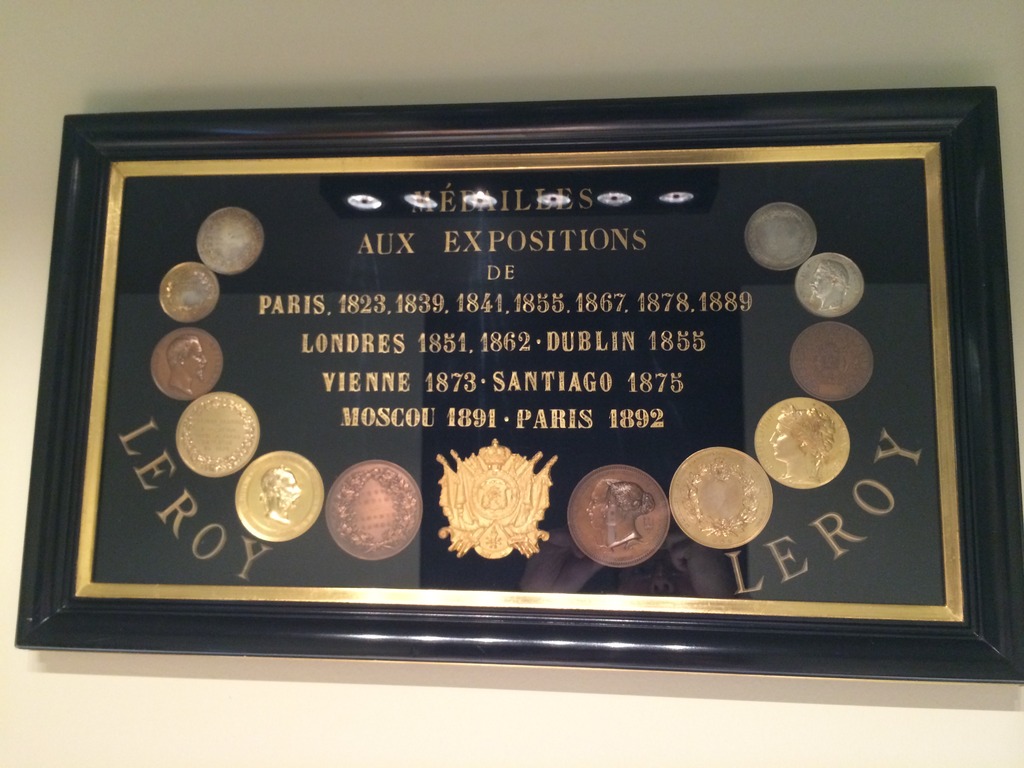
As with many watch dynasties that have gone through the rise and fall over the centuries, Leroy had discontinued production in the 1960’s due to the “quartz crisis” and has been “revived” in 2000. This was nothing unusual, as it was also the case of Breguet and Blancpain, who were revived by Swatch group a few decades ago.
The brand has a strong DNA in chronometric precision and a particular classic look. This is communicated very strongly via its Besanscon Observatory certification in its current collection. With that, let’s talk about the next point.
2. The current products are well-made and the designs are consistent with its DNA.
Leroy’s history embodies with chronometric precision, high-end finishing, and innovative complications Such spirit carries over to the current collection.
Chrometric precision:
The Osmior Monopusher, the Marine Deck Chronometer, the Osmior Tourbillon, and the 2015 Basel novelty the Chronometer Observatoire are all certified by the National Observatory of Besancon in France. This is most stringent chronometric certification process in watchmaking, and is far more stringent and many times more expensive to carry out than that the Swiss COSC chronometer standards (as used by Rolex, Omega
and other major Swiss houses). Besancon certification requires the entire finished watch (not just the movement alone, as in COSC) to be monitored for time deviation in various positions for 15 consecutive days, with a much tighter tolerance. The time-keeping for every timepiece is manually checked every day by an official at the Observatory, even on weekends! If deviation takes the place any time during the 15 period, the watch needs to be sent back to the manufacturer to be regulated.
Of the chronometric standards in existence. Besancon is superior to COSC and the chronometric component of the Geneva Seal. Perhaps the only standard that is comparable is the Quality Fleurier seal, which given to only the few very top-end pieces of Parmigiani and Chopard LUC.
Because of such strict rules and high expenses, most brands shy away from Besancon certification. Only 3 brands consistently do it – Kari Voultilaneon, Laurent Ferrier, and
Leroy. Enough said.
Serious connoisseurs would recognize the chronometric importance of Voultilaneon’ s Observatoire (and its high price tag of $60,000+ for a time only watch). Leroy is in the same league in terms of certification.
The commitment to chronometric precision is reflected in Leroy’s Osmior Tourbillon Regulator as the winner of the 2013 International Chronometry Competition in the category of tourbillon, hence making the Osmior Tourbillon the most accurate tourbillon on the market.
Design and Finishing:
The designs of the current models are true to Leroy’s history. The Marine Deck Chronometer are designed after the Leroy Deck Chronometer on royal naval ships in the 1800’s. The Osmior line, with its smooth pebble-like case and the numerals, remind us of Leroy’s pocket watches.
See below for the resemblance of past and present…

Leroy 18K pocket watch, circa 1870

Current model – Osmior monopusher chronograph in 18K

A 18K gold Leroy perpetual calendar chronograph moophase pocket watch, circa 1930’s
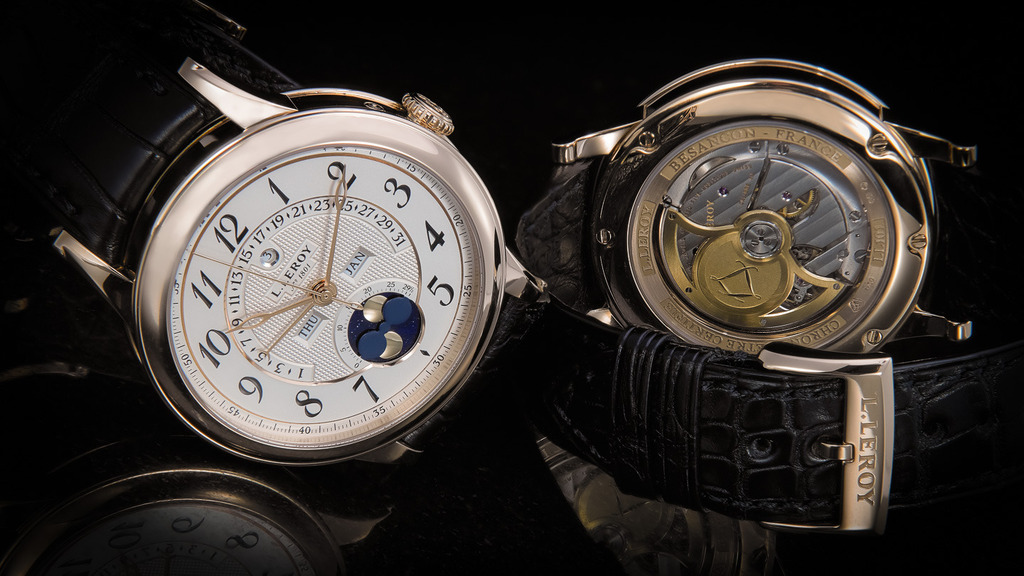
Current model – Osmior perpetual calendar retrograde rose gold
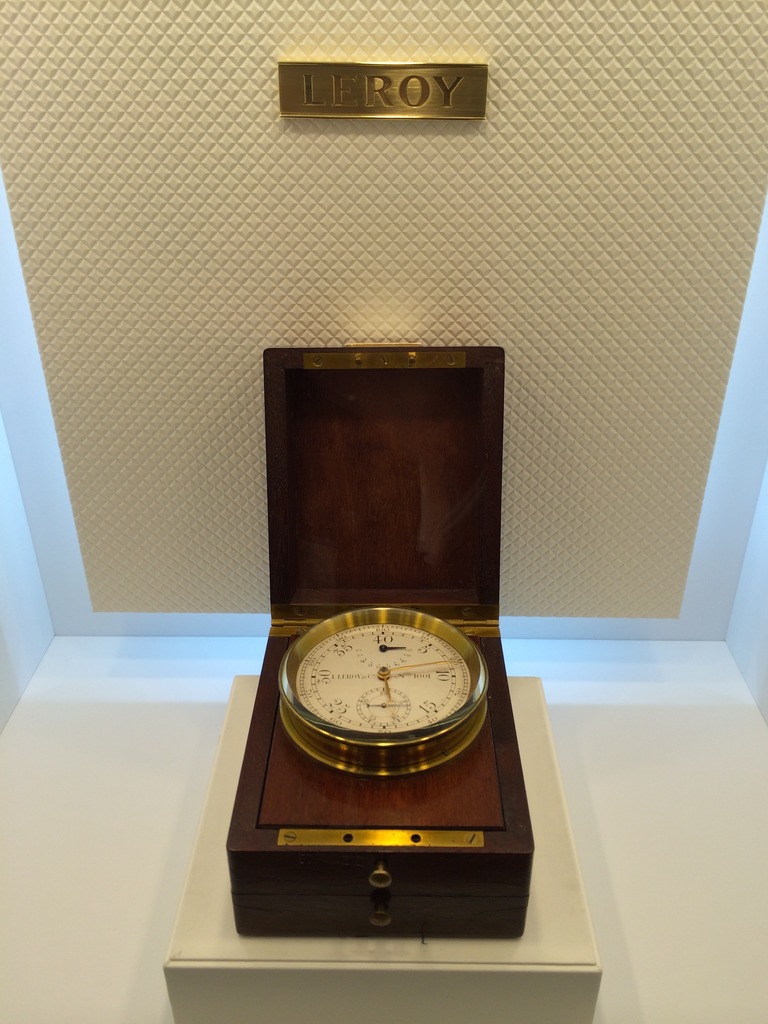
A historical Leroy deck chronometer on the royal naval ship, circa 1800’s
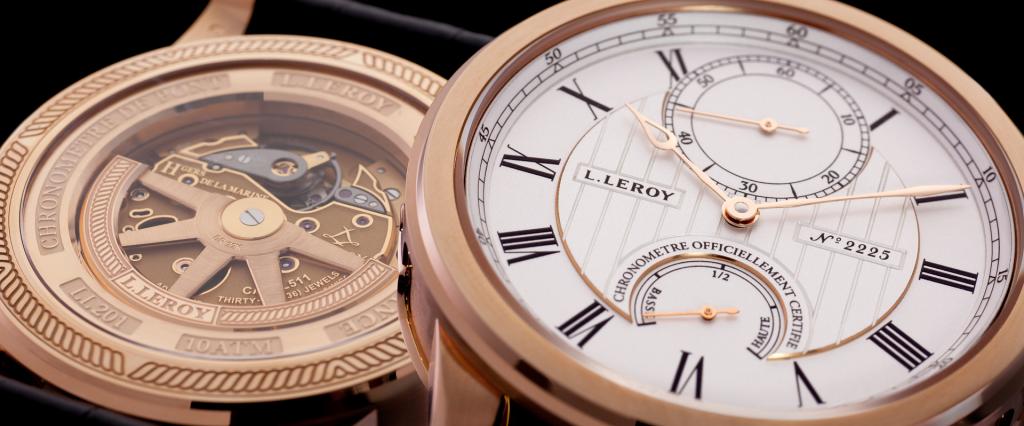
Current model – Marine Deck Chronometer in 18K rose gold
Other than design, the craftsmanship is amazing with a lot of fine details too many to list. Here are some examples:
- – The Marine case exhibits multiple types of high-polished, matte and brushed finishing.
- – The Osmior case is perfectly smooth, high-polish pebble, reminiscent of Laurent Ferrier.
- – The Osmior dial features traditional hand-guilloche and hands using thermetically blued-steel methods.
- – The movements are beautifully finished, with Osmior using traditional cote-de-geneve finishing, and the
Marine features sand-blasted finishing on the bridges – the same type used by Greubel Forsey. - – Innovation is continual. The completely in-house movement of Marine chronometer features “KIF” shock protection system for the balance, and Silicon escapement without lubrication.
- – The moonphase on the Osmior Perpetual Calendar Retrograde is constructed out of the precious deep-blue natural Aventurine stone, with its natural gold glimmer representing the stars. The moonphase is constructed out of sold 18K gold. The purpose of using such materials is to create a moonphase that realistically resembles the night sky.
3. Leroy is vertically integrated, with its own manufacture
Leroy has the capability to make all components inside the movement – rendering itself technically independent.
The Marine Deck Chronometer and the Osmior Tourbillon feature completely in-house movement, with an entire technical staff ranging from movement architecture design, movement machining, and movement finishing, all at Manufacture Leroy in Le Sentier. The Osmior Monopushers and Perpetual Calendars have in-house components of over 70%, featuring in-house designed complication modules, on top of the reliable high-grade base Vaucher movement – the same base used by Parmigiani.

Movement designer working on the new Observatoire design
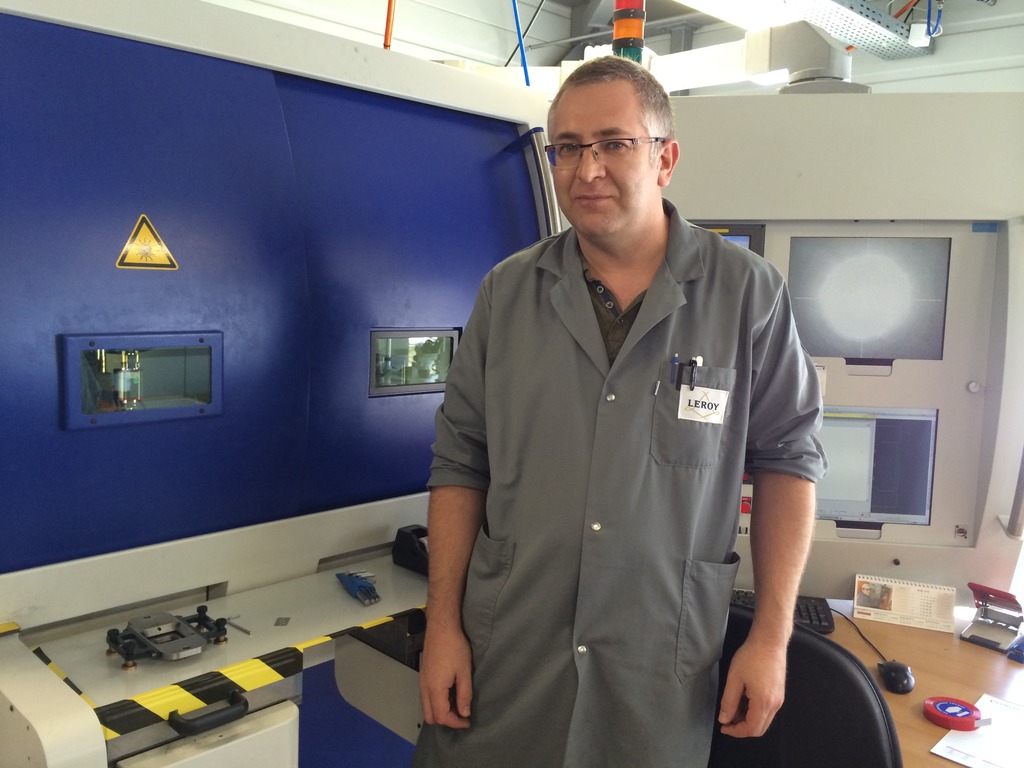
A technician at Manufacture Leroy, supervising the machining of the movement plates
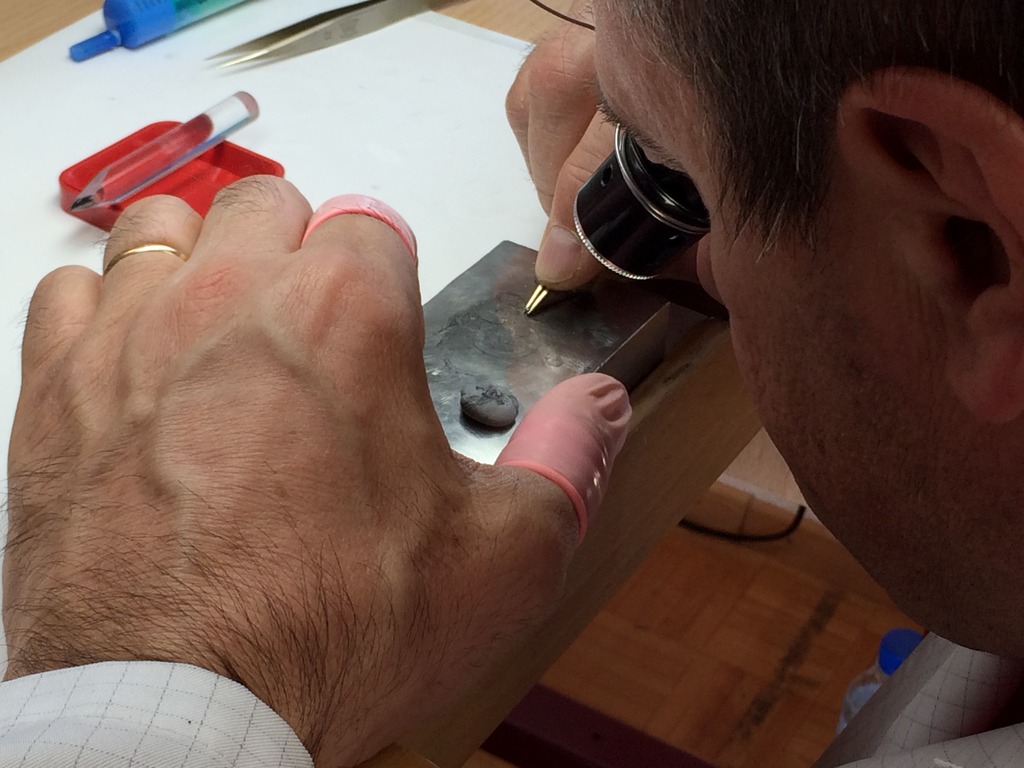
A watchmaker at Manufacture Leroy, painstakingly each screw repeatedly, until it exhibits a mirror-like finishing
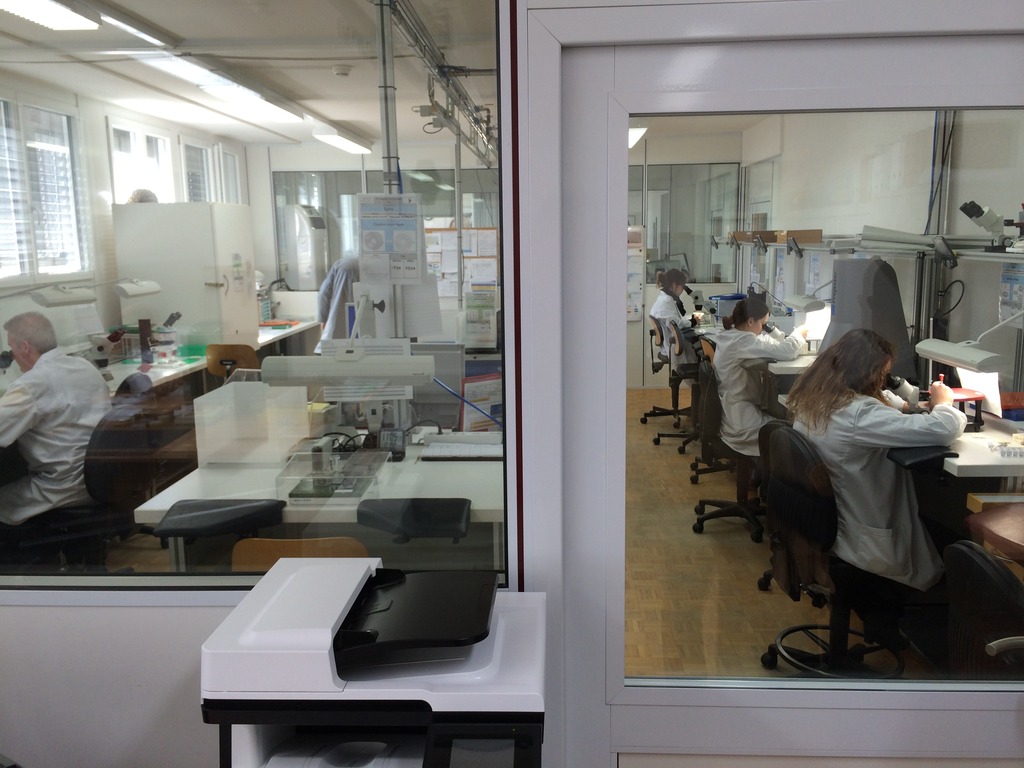
Watchmakers working on movement finishing and assembly
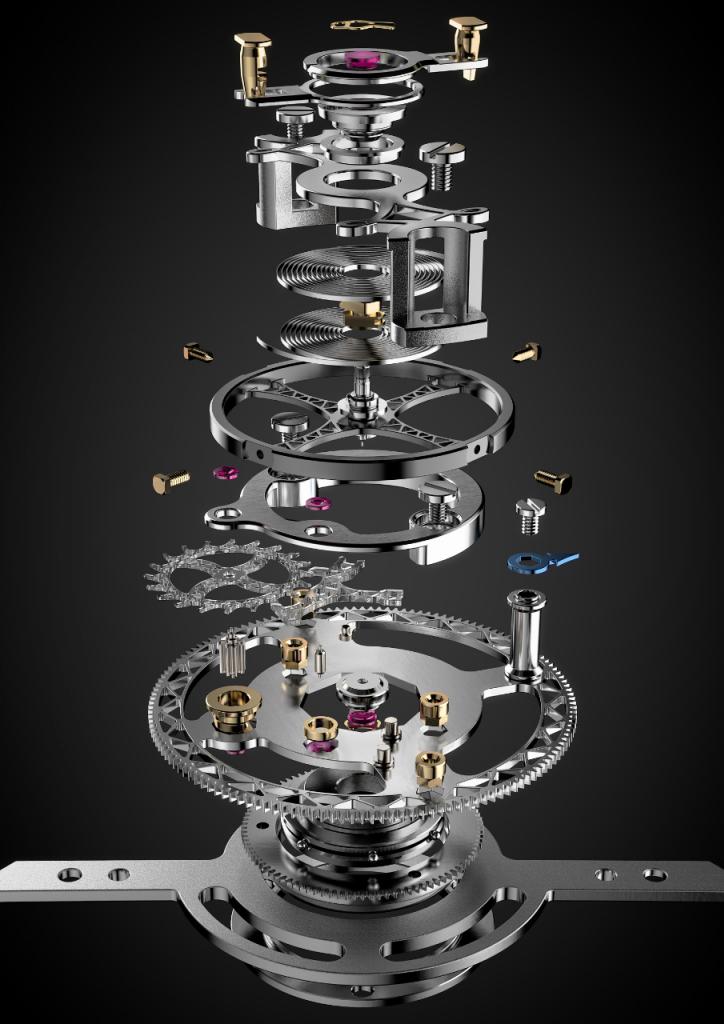
The current model of Osmior tourbillon design and the tourbillon cage, using silicium parts
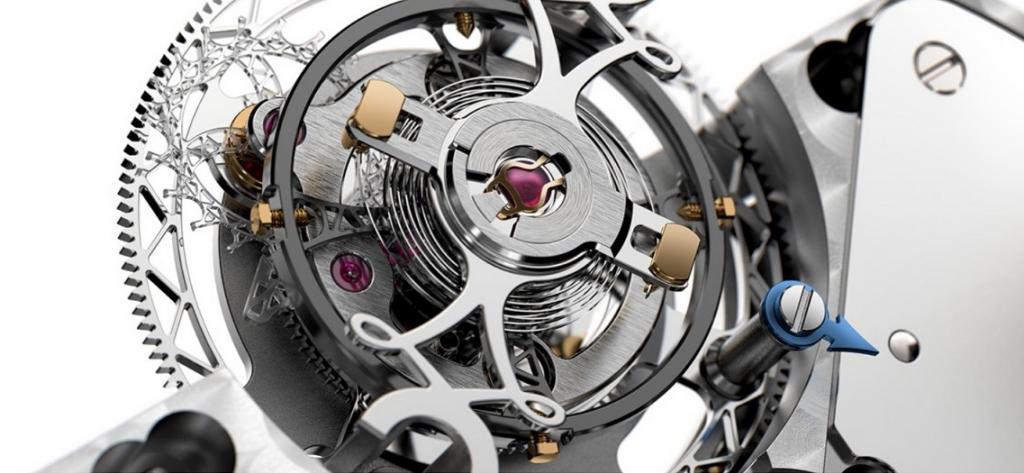
4. Leroy currently makes 100-150 pieces a year.
The small production keeps brand exclusive, and keep the servicing fast and pleasant. For some of you who have experienced Leroy’s servicing, it has one of the fastest turnaround in the high-end Swiss industry. A routine service takes less than 20 days, and every piece is inspected by the chief watchmaker afterwards.
In 2015, their goal is to stay with 150 pieces, with the gradual goal to 200-piece annual production by 2018.
Also, Leroy only makes watch in precious metal (18K gold and platinum), never in steel. The restriction on metal further keeps the quantity small and the brand exclusive
5. Focused management with strong financial backing
Leroy is the personal passion of Festina group’s owner, who has enjoyed steady profits from his other ventures and has no cashflow issues. The owner has committed tens of millions of dollars into Leroy, as evidenced by the state-of-the-art set-up at the Manufacture. The owner also has a long term perspective and is committed to continuously invest into the brand for marketing and R&D.
Leroy’s CEO, Mr. Olivier Muller, is an industry veteran who not only is passionate about watches, but is also a great marketer who has a focused approach to building up boutique brands. In 2009, Mr. Muller has successfully built Laurent Ferrier (along with the namesake watchmaker) from scratch without much investment, into a high-end boutique brand that makes about 150 watches a year with a time-only micro-rotor model selling for $50,000+, and the tourbillon selling for $140,000+.
In 2014, Mr. Muller took over the helm of Leroy and is bringing in the same discipline that he had at Laurent Ferrier. The job at Leroy will be easier given its rich history and the strong financial backing.
Hence, there is a brand that scores high on all the essential points that make a watch worthy of being a collectible and an investment. That is why I am constantly inspired by Leroy’s current products, and that’s why I am confident about the future prospect of Leroy.
Hope you have enjoyed the article.
Yours truly,
Jon

